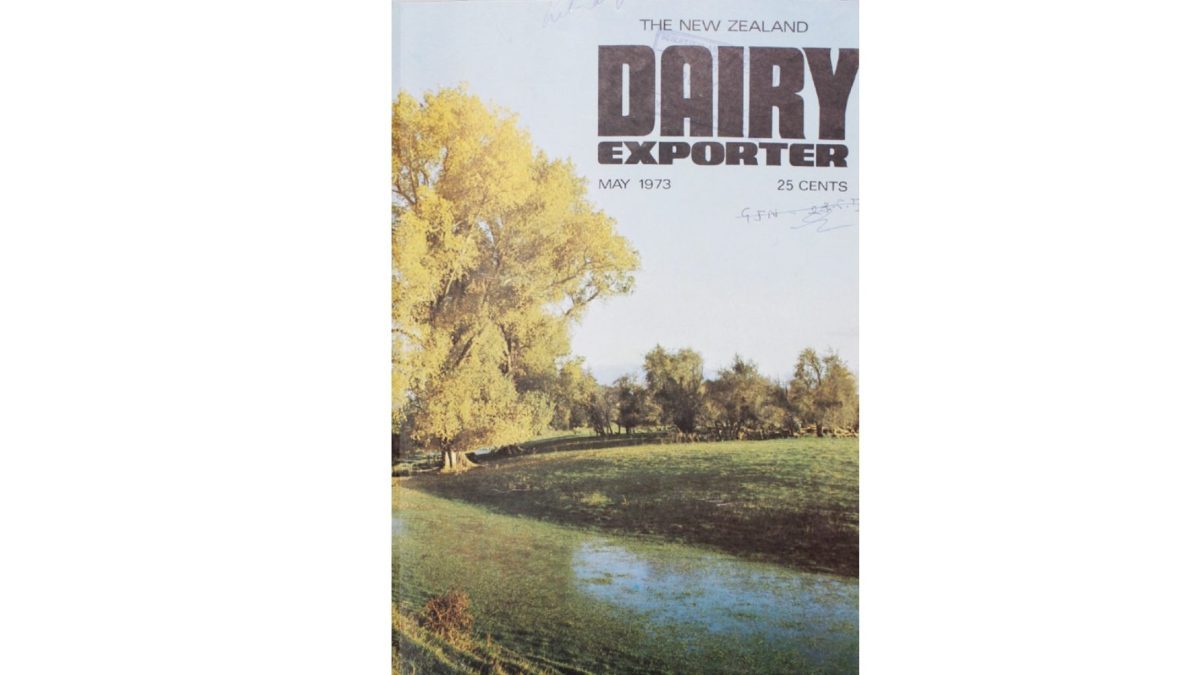50 Years Ago in Dairy Exporter: May 1973
As NZ Dairy Exporter counts down to its centenary in 2025, we look back at the issues of earlier decades.

LOVE YOUR COWS
“Love your cows and everything else falls into place.”
This is the simple but unswerving attitude to dairy farming adopted by Mr Ray Sax, who farms on the edge of the fertile Rangitaiki Plain, 12 miles from Whakatane. Ray Sax started milking when he was eight years old, and more than 40 years later he is still working happily among cows with no thoughts of a change to any other type of farming. The care he lavishes on them is apparent in a magnificent Jersey herd of about 300 cows. He knows all their names and will talk to them or stop to give an affectionate pat while showing a visitor around.
BIG DAIRY DEVELOPMENT UNDER WAY AT MASSEY
Massey University has flexed its farming muscles and broken its bounds to spread over 400 acres of adjacent land. An intensive development programme is under way to have the new land laid out as a dairy farm in time for the coming season.
It is a big project which includes:
• Building a 36-bail rotary turnstyle milking shed.
• Laying 120 chains of farm races.
• Sowing 86 acres in new grass.
• An extensive drainage scheme with tile drains at an average 3-4 chains apart.
• A special effluent disposal system.
• Electric fence sub-division.
• Building dams to catch and hold water from a 50-acre “catchment”.
• The overall cost estimates have not been made public.
INCREASINGLY URGENT TO CONTROL INFLATION
With the prospect of lower returns as EEC levies are applied to New Zealand’s sales in Britain, it will be increasingly urgent that the Government should bring inflation under reasonable control, said the Chairman of the NZ Dairy Board, Mr F. L. Onion, at the Palmerston North ward conference.
“As an export industry, our fortunes are dominated by political and economic developments affecting international trade just as on the home front we are subject to the vagaries of climate,” he said.
Continued inflation and devaluation of sterling and the United States dollar had cut into the industry’s earnings.
KEEN INTEREST IN BALLOT FARMS
The first dairy units to be offered under the land settlement scheme for several years attracted tremendous interest recently. There were about 60 applicants for the three adjoining farms at Pukehina in the Bay of Plenty, from many parts of New Zealand including the South Island, and the three successful men take over the properties on June 1. Each unit has a three-bedroomed house, a new 10-aside milking shed, an implement shed and a 1200-bale haybarn.
Hundreds of dairy farms have been settled by this means over the years in New Zealand, especially following World War II, but there was a slackening of interest. Then a tendency developed to offer almost all sheep farms, but this also waned with the temporary decline in that industry. Now the enthusiasm is back, with six sheep units offered as well as the three dairy units. And the Lands and Survey Department is working towards offering 17 sheep and five more dairy units in 1974-75.
DUCK POND SUBSIDIES AID STOCK
Many farmers are cashing-in on special wild fowl habitat subsidies to create ponds for wild ducks and water storage for their stock. The pond subsidies are to offset the diminishing amounts of wetland habitat in country districts where ducks and other wild waterfowl live and breed.
Subsidies of up to 50 per cent of the cost of creating a pond are available.
Thanks to the Hocken Library, Dunedin





